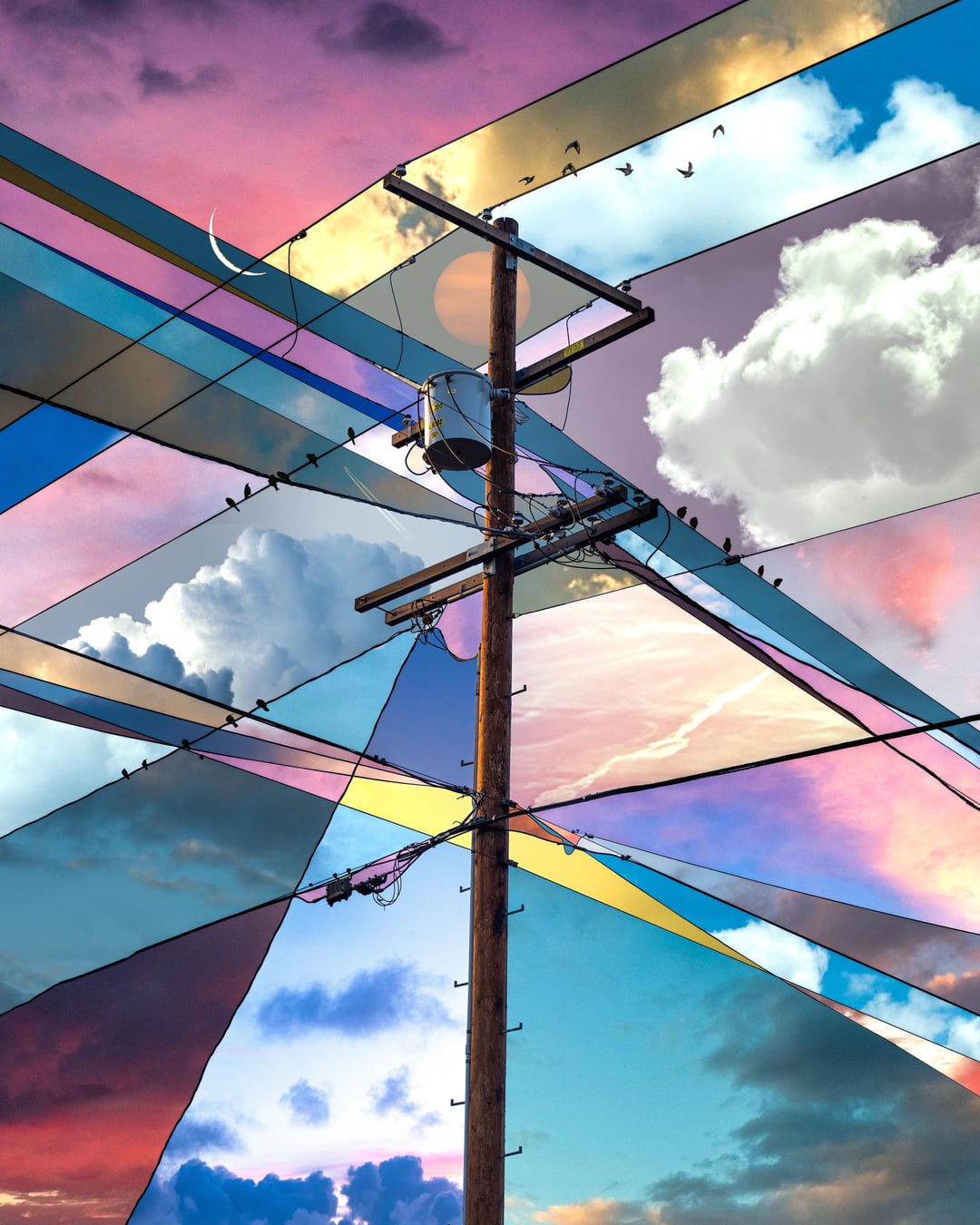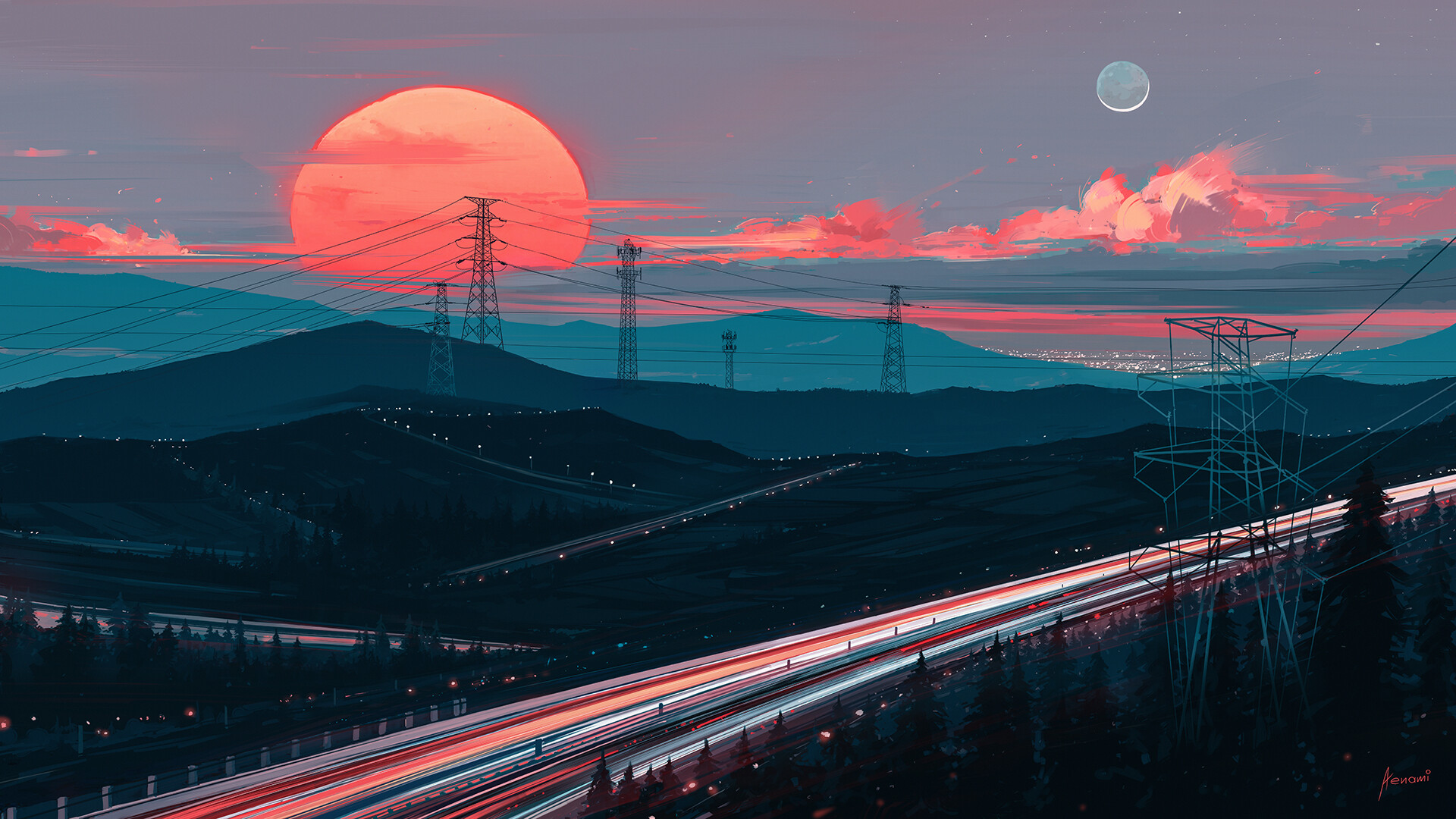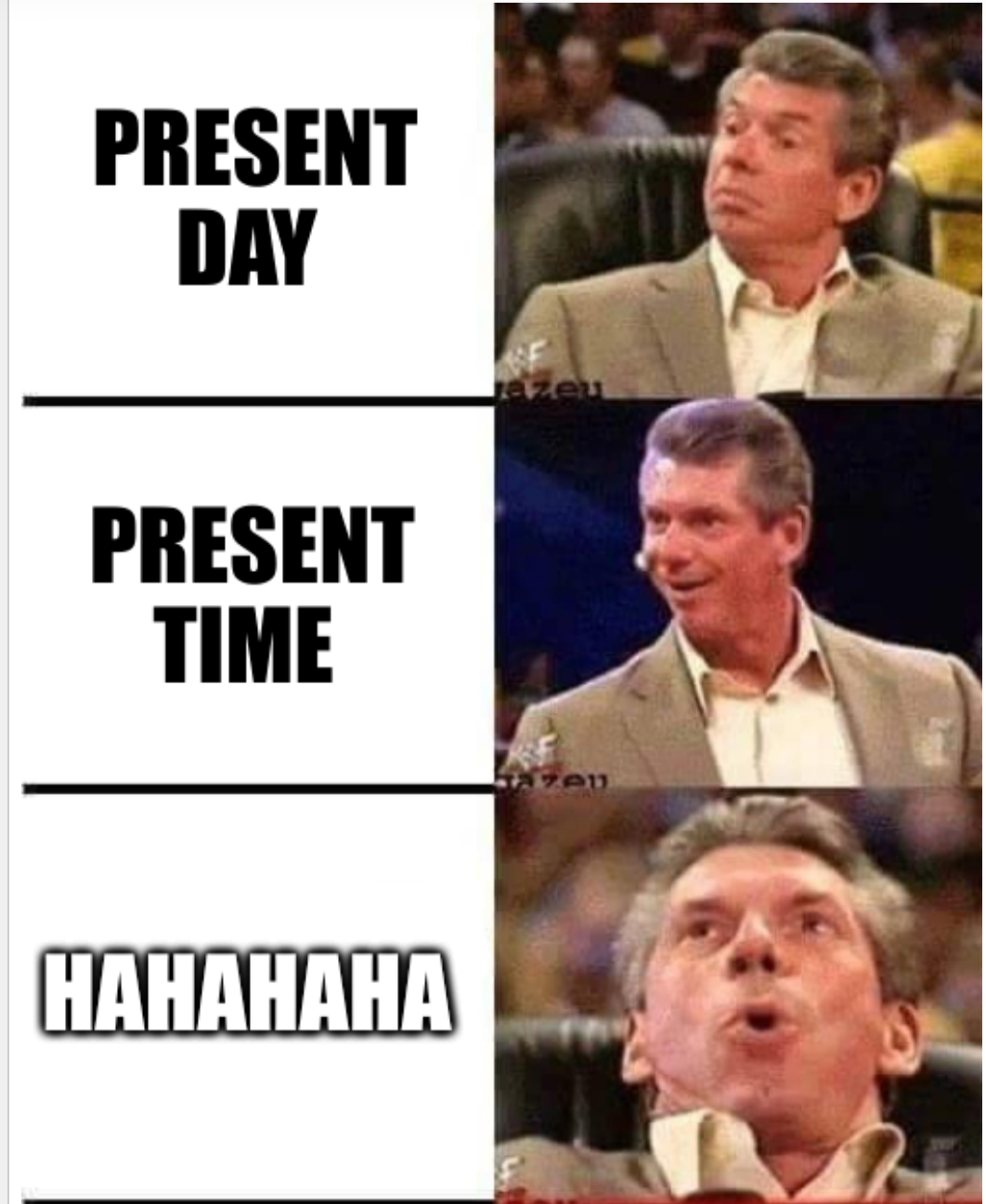Powerlines are cool and they make great framing for art
Source: https://www.reddit.com/r/pics/comments/m6wdjr/twenty_skies/

This person makes really beautiful digital art that features a lot of power lines. I think it’s really cool. Example:

Thank you for uploading the full rez. Gimme gimme! <3
!wallpapers@lemmy.ca material right there.
For over a decade every one of my wallpapers was an Aenami piece. They’re just so dang cool.
Wow, thanks for the link. It’s beautiful
Overhead transmission lines are so 1950s.
Invest in your country.
Japan is earthquake country so they get a pass.
India however…
Japan is slowly burying all their overhead lines into the sidewalks. A lot of urban streets look so much nicer now than they did 10 years ago.
It’s probably no worse in an earthquake than the water mains, which would inherently be a lot more rigid than cables with intentional slack built into every segment.
Investing on your country would be connecting more people to electricity not make the sky look better
The sky looking better is just one thing. No more blackouts when there’s winds or thunderstorms or just stray branches is the real perk.
Thanks for the idea, but have you considered spending it all on bombs instead?
There are benefits of overhead lines. They are cheaper to install, maintain, and repair. Diagnosing problems are much easier as well. They’re certainly uglier and easier to damage but you don’t have to dig up the road to fix them.
Newer cities shouldn’t install overhead lines but to have old cities with overhead lines switch to underground ones is very expensive and takes a lot of time, something smaller cities likely don’t have the budget for.
You don’t have to dig up the roads to fix buried power lines any more than you have to tear up your walls to replace power lines in your house: you install a conduit (basically a pipe) under the road once and if the cable somehow gets damaged and needs to be replaced you can just run new cable through the existing conduit by simply pushing it in on one end and pulling from the other.
Transformers and other non-cable equipment are typically housed aboveground in little boxes or built in to the house, so they’re actually easier to maintain than if they were installed aboveground on a pole since you don’t need a cherrypicker to access it.
Obviously in a less wealthy small town with existing overhead infrastructure it doesn’t make much sense to move it all underground “just because”, but if you’re already trenching under the road to install water/sewage/gas mains, it won’t cost much extra to throw down an additional one or two smaller conduits for running power cables or telephone/cable/fiber lines.
Power lines blocking sky, Japan: 😍😍😍😍
go look at pictures of the Indian power systems
The Lain aesthetics is just a regular day in Brazil.
Do you guys like having power? Lol
Have you heard of under ground power cables? Or of not that, a slightly neater organization of power cables?
Welcome to Mexico, er have such beautiful cities! Except for the 3623516582 cables everywhere
Oh. I guess they could take the sky from me.
🍃
This but unironically.
Fuck appeals to nature.
Honestly, to me the ironic part is the power lines in this artwork are unappealing to me because of the artist not the subject matter. It seems they don’t know what all the lines are or where they go or how they work, so when I look at it and do know what it’s supposed to look like, this just looks like a mess that makes zero sense. The artist has created some sort of electrical fire hazard.
I suspect that came directly from irl
Somewhere. Somewhere Japan
I think clean power lines look nice. I’d definitely prefer them to a butterfly killing roadway or lighted poles that create light pollution and confuse wildlife.
Check out the photography by Alex Hyner for some amazing skies between the power lines
I’m on vacation in Thailand for the first time right now and it’s sooo true here.
Yes
But
not getting power
The highways are even worse.










